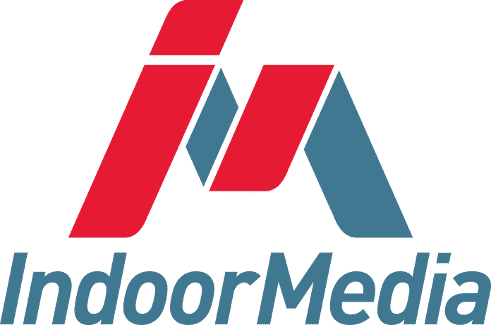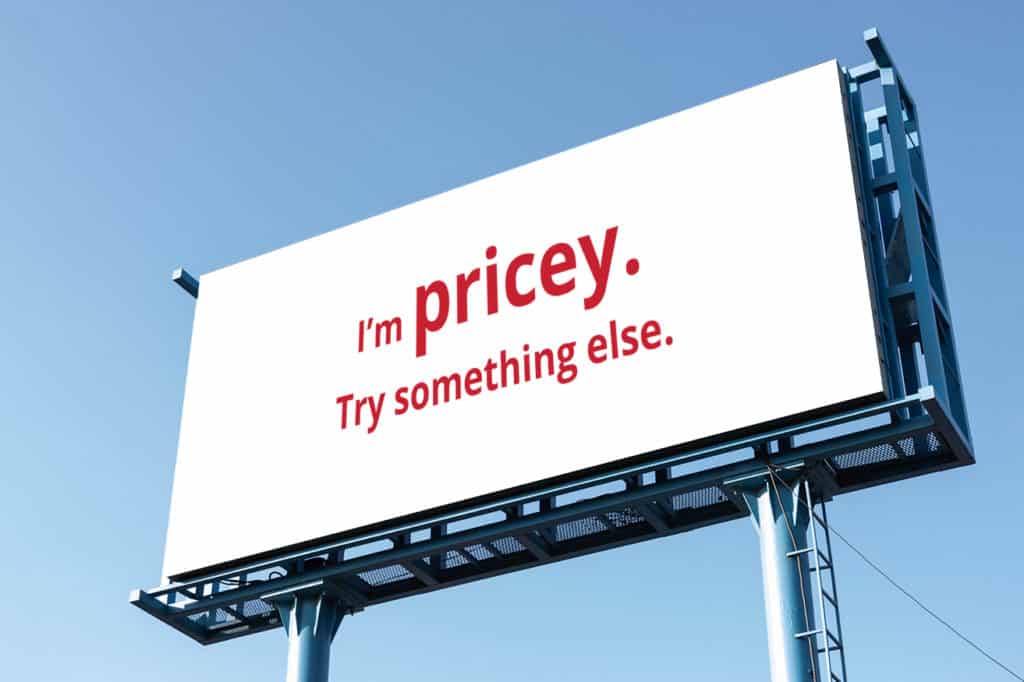At their core, billboards are signs —and signs work. Whether you’re using one to post your company’s daily hours or trying to tell customers what your company does, we all need signage. However, posting a sign in your storefront is a lot cheaper than renting a billboard…
When we think about signage in advertising, we often think about hyper-local advertising. Choosing the right place for your sign is an aspect of targeting, leading to either persona or geo-targeting.
Persona targeting is an attempt to predict where your customers will visit by evaluating their interests. A fast-food restaurant may post a cheeky sign outside a gym to lure customers in after their workout, but they’d probably be better off posting an ad for their drive-thru off the freeway.
With the right database, geo-targeting is a little easier. Geo-targeting is when advertisers select an area to advertise within, depending on where their customers live or work. A nail salon may choose to post signs in surrounding neighborhoods near their salon or advertise directly where most of their clients live.
This is why collecting information about your customers is an important part of selecting where to advertise. The more educated your approach, the more successful your campaign can be.
What Can You Accomplish With A Billboard?
Many advertisers may choose print-media to hand out coupons or vouchers for customers to redeem. This is one of the easiest ways to get customers in the door, but not really an option for billboards.
Consequently, most billboard campaigns are either going to center around branding a business or just promoting a customer’s awareness of the company’s existence.
For example, we’ve all driven past a highway sign that said something crazy like “World’s Biggest Turtle Farm” or “World’s Deepest Gold Mine.” These signs hope to point out a business you probably never would have seen otherwise. How they present the company is a branding decision and depends on how they hope to be perceived by customers. It’s important never to sacrifice branding in favor of awareness, and finding the right balance can be difficult.
This branding decision will also depend on who they’re trying to draw in. A billboard on the side of a busy freeway that sees people flying by and moving along from state to state might try to draw tourists in by painting themselves as a must-see attraction. They could play on local culture to make themselves stand out, but it’s important they don’t push away their neighbors.
For local businesses, playing on a locals-only inside joke is one way to brand yourself within the community. You can also use a billboard for advertising a locals-only deal or drawing attention to a hot promotion offered once a week.
Whatever you choose to draw attention to, it must be enough to bring in new customers and hold onto the business you’ve already established.
How Long Do You Have To Make an Impression?
Those sky-high signs say something simple like “World’s Largest Corn Maze” because they have to get their message across quickly. When people are zooming by on a busy freeway, you’ll need to catch their attention in one glance and hope that first impression is enough to secure their business. This leads companies to use visual aids like bright red or yellow signage and huge eye-popping text.
Even in a residential area where cars are only driving 30mph, your billboard will only have a few seconds to catch their eye. This is why it’s important to use that moment to highlight one unbeatable deal or aspect of your business and trust your customers to go from there. Then you’ll have to think about when they’re likely to pass by the sign and plan your message accordingly.
Are you advertising along a freeway people use to commute to work? Are your customers commuting into the city or home from a long day? Many fast-food chains advertise breakfast specials to hungry early birds and use the signs on the opposite side of the road advertising late-night snacks for those who are just heading home from the office.
Planning around the when, where, and what your customers see on your billboard is all a part of the game.
What About a Mini Billboard?
As we mentioned, planning your advertisement around your customer’s usual route is the only way to ensure the right people view your ad. The best strategists know this, and that’s what has led so many small businesses to look into grocery store advertising. Planting supermarket advertising in a store near your business is a safe way to ensure your ads get the attention it needs to succeed.
Through programs like Cartvertising or SmartSource, shopping cart advertising works to extend that 2-second impression common to billboards. It’s hard to say how many times a customer will actually drive by your ad no matter where it’s placed, nor can you be sure of how many times they’ll look at it.
Placing a supermarket advertisement on Cartvertising or a Smartsource cart guarantees your customers are sure to see your ad every time they look down at their cart, as well as anytime they carefully push by another cart in the aisle.
With the average consumer spending about 47 minutes in a grocery store every time they visit, your supermarket advertisement is guaranteed to garner a much bigger impression than a roadside billboard. The ads function in the same way and can still be used to brand your business, but with shopping cart advertising rates so much lower than billboard fees, you can attract attention without going broke.
Plus, with the time spent mulling over that first impression and the likelihood of another when customers return to the store, it’s easy to see how shopping cart advertising is a more reliable option than emblazoned billboards.


 By Talitha Turkin
By Talitha Turkin By IndoorMedia Marketing
By IndoorMedia Marketing